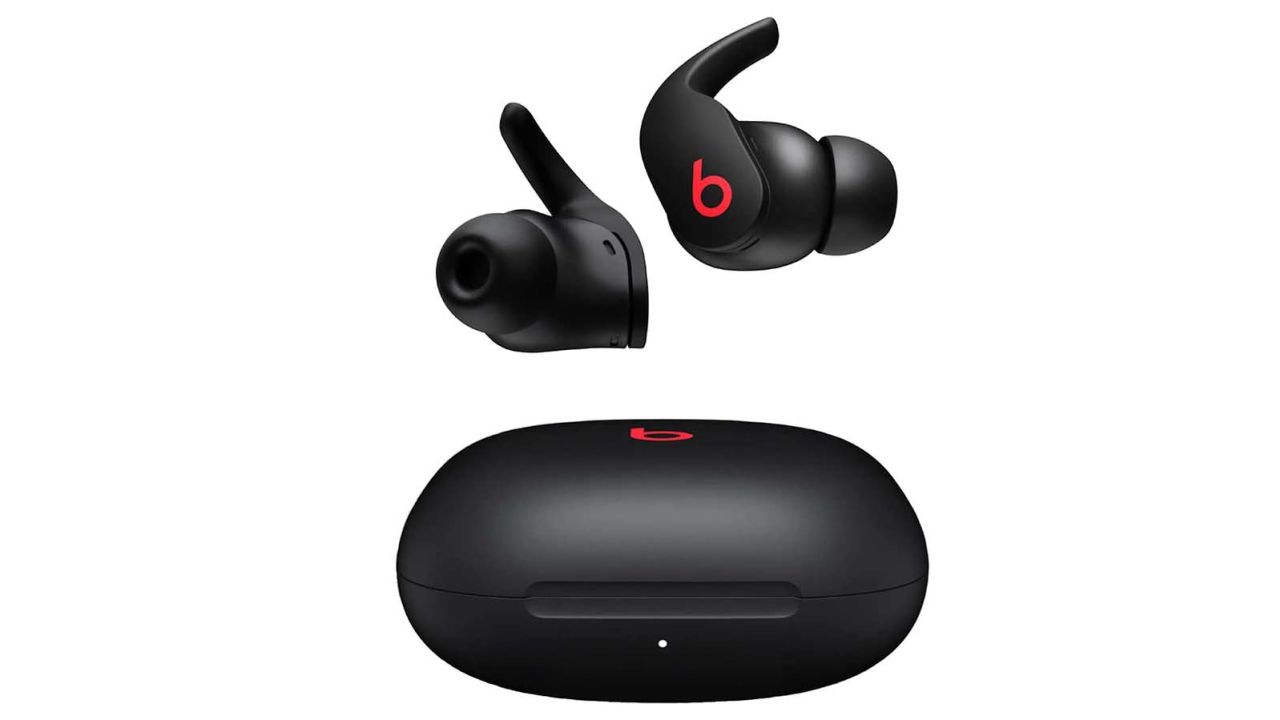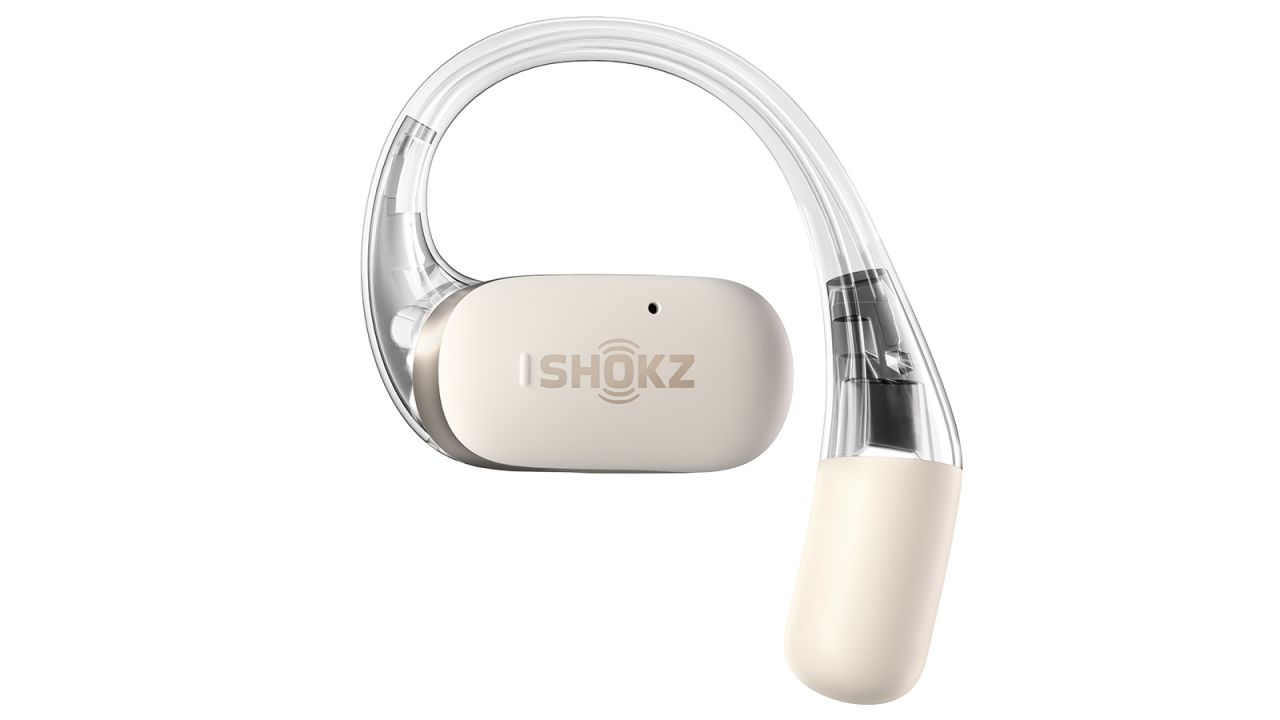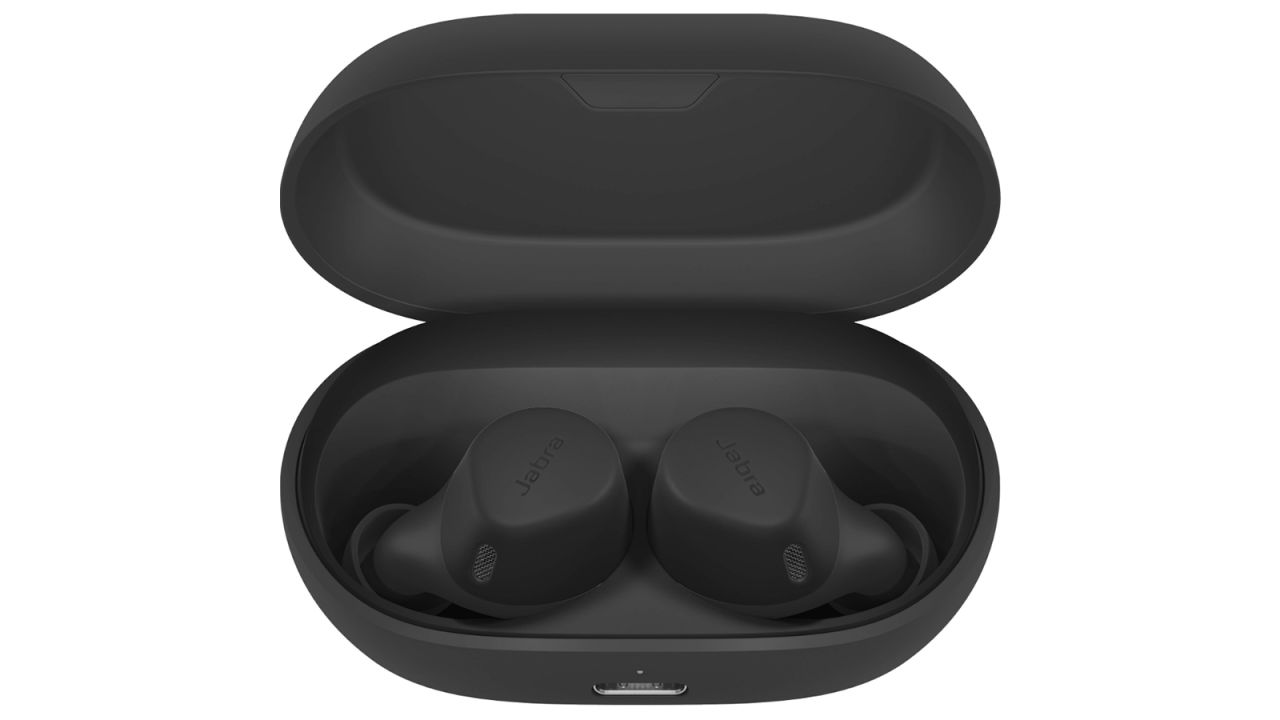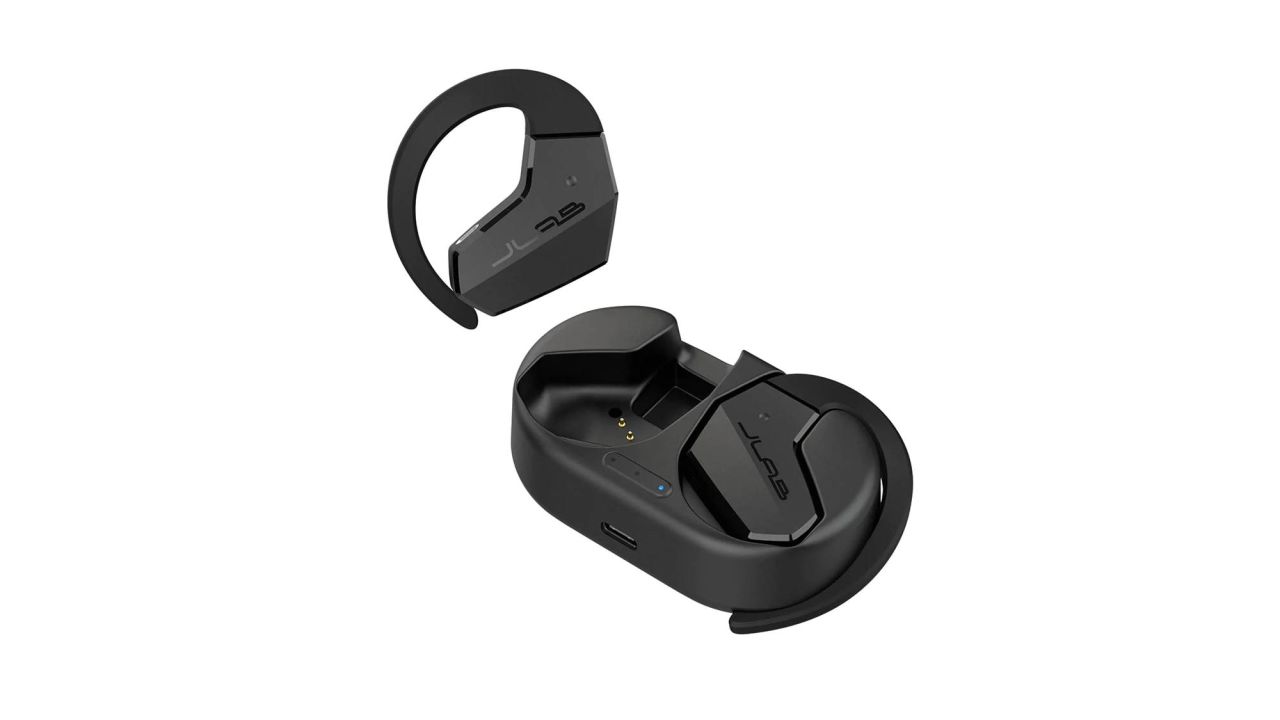The best workout headphones we tested
Best workout headphones: Beats Fit Pro
Best workout headphones for running and outdoor workouts: Shokz OpenRun Pro
Anyone who spends time working out, inside or outdoors, understands the importance of wearing the best workout headphones. Studies have even demonstrated that music can make exercise more enjoyable and improve your workouts, so having a quality pair of go-to headphones is essential.
Thankfully, the latest headphones are better suited for exercising with than ever, with secure fit, intuitive controls and weather- and sweatproof designs that let you concentrate on your workout without worrying about losing an earbud. There are even models specifically designed to let you safely listen while working out in the great outdoors.
To find the best workout headphones, we put several leading models into action as part of our daily workout regimens in the gym, at home and on the streets and trails. We judged them on design, noise isolation, comfort, fit, battery life, IP rating, sound quality and usability. In the end, we found two solid options that should work for you whether you’re a gym rat or you prefer breaking a sweat outside.
We used the Beats Fit Pro in the gym and all day for work, play and commutes, and found their secure, sweat-resistant design and superb audio make them a perfect fit for anyone's workout, no matter whether you’re an Apple or Android user.
The Shokz OpenRun Pro bone-conduction headphones don’t sound as good as sealed earbuds like the Beats Fit Pro, but we loved them for running and hiking since they let you hear your surroundings as clearly as you would without wearing headphones at all.
Best workout headphones: Beats Fit Pro

The Beats Fit Pro earbuds offer all of the performance of Apple’s first-generation AirPods Pro in a more secure-fitting package that’s perfect for more active pursuits but great for everyday use too. In fact, they’re not just our favorite workout headphones; they’ve been our recommended headphones for Apple users in general for the past year. Their reliable fit, easy-to-use touch controls and snug wingtip design meant that even over months of intense exercise testing, they never fell out — not one single time.
The smooth rubber and light weight of 5.6 grams per earbud (they are much more compact than the similarly featured Powerbeats Pro) made us nearly forget we were wearing the Beats Fit Pro, and they were never loose or in need of fiddling with the fit while exercising. The flexible wings and tips with pressure-relieving vents made a real difference during workouts. Once secured, it took extra effort to remove them — even on purpose.
That matters not just because we got a better music-listening experience but also because the secure fit let us concentrate on our workouts. We didn’t miss a minute of our virtual workouts — which included everything from running to rowing to lifting weights to core and yoga work — and never had to spend time fiddling with a loose earbud while moving. Plus, with an IPX4 water-resistance rating, we didn’t have to worry about sweat or using them in rainy conditions.
The controls (an advancement over the first-gen AirPods Pro, and more like the current second-generation model) are simple to maneuver, and again let us stay focused. Just tap and click either bud to pause, play and skip tracks or to answer and hang up a call.
Since the Beats Fit Pro are great everyday headphones, their long battery life — around six hours on their own and up to 30 hours, including multiple refreshes from a fully charged case, as found in our in-depth testing — comes in handy. Also, unlike AirPods with third-party wings, these can charge in the case, wings intact, making them much handier for use, despite the slightly larger charging case.
In addition to the great sound, intuitive controls and excellent noise-canceling capabilities, the Beats Fit Pro are just the most comfortable, best-fitting earbuds we’ve ever used. And when it comes to working out, sometimes you just need to get back to the basics.
Best workout headphones for running and outdoor workouts: Shokz OpenRun Pro

The Shokz OpenRun Pro look and feel unlike the headphones you’re used to. Rather than sitting in your ear canals or over your earlobes, the business ends of these Bluetooth headphones rest just in front of your ears, on your cheekbones.
The Shokz work using what’s known as bone-conduction technology to deliver sound not through the air but through your cheekbone. Yes, your cheekbone. In standard over- or in-ear headphones, sound vibrations travel through the air down the ear canal to the eardrum, where your brain processes these vibrations and interprets them as sounds. Bone-conduction technology bypasses the eardrum and sends vibrations via the bones located in your upper cheek and jaw to your cochlea, or inner ear, and on to your brain.
You’ll have to keep in mind that the sound quality is definitely worse than traditional sealed earbuds or suspended speaker designs like the Bose Sport Open or JLab Open Sport. It’s tinnier, and has the same sort of relationship to more listening-oriented headphone sound that blasting music from your phone or computer does to relaxing in front of a good stereo system.
But that’s to be expected when you’re not delivering sound directly into your eardrum, and we found the sound quality of the OpenRun Pro to be perfectly adequate for workout purposes. It’s improved over previous bone-conduction headphones we’ve tried, with better bass and plenty of punch if you like bass-heavy music while working out.
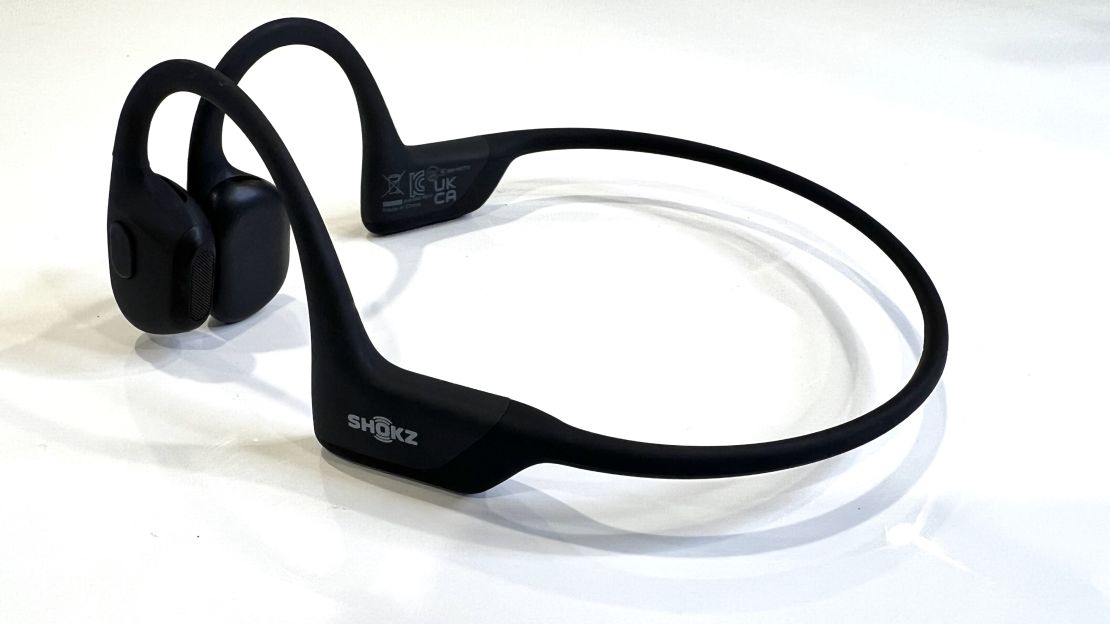
Realistically, even if you’re using a good sealed in-ear headphone like the Beats Fit Pro in transparency mode while you’re running, you aren’t looking for a fully immersive audio experience anyway. With the OpenRun Pro, we really enjoyed having situational awareness that let us hear traffic and the world around us just as well as we would without headphones.
Unlike most of the Bluetooth workout headphones we’ve tested, the Shokz OpenRun Pro aren’t a true wireless model. The earpieces are connected by a springy titanium band that runs around the back of your neck and hooks over your ears. Regardless of activity, the OpenRun Pro remained comfortable throughout our testing, without pinching or discomfort, and didn’t conflict with oversized sunglasses, a hat or both. And despite the “barely there” feel, they didn’t budge during any workout, not even during high-intensity interval training. Their reasonable 10 hours of battery life got us through a week of runs and outdoor workouts.
How we tested
To help find the best options, we used the workout headphones as part of our daily workouts, at home, in the gym and outdoors in conditions ranging from sweltering heat to cool rainy days. While we did assess sound quality for each headphone, we weighted other factors — effectiveness of transparency modes, ease of use under stress, comfort — more heavily than we would when assessing headphones for everyday use.
Here’s what we considered while testing:
- Fit and comfort: To check fit and comfort in real-world situations, we used them on long and short runs and through indoor endurance sessions such as cycling, running, dance and HIIT classes, which included jumping jacks, burpees, jumps, sit-ups and crunches. We also used them while lifting weights, doing yoga and Pilates and during Barre classes.
- Stability and performance: Special attention was paid to how they stayed in our ears during stress tests and how they worked — and how easy they were to operate — when we were sweaty or wet. We assessed noise isolation in indoor settings, checking the headphones’ ability to stifle the noises we didn’t want to hear in the gym.
- Features: For running and hiking use, we checked out how well transparency modes (or other hear-through technologies, such as bone conduction or other open-ear designs) let us maintain situational awareness and hear traffic and other street or trail users.
- Ease of use: We also noted how easy it was to control the headphones while on the move and if any companion apps were simple to use when our heart rate increased.
Other workout headphones we recommend
The OpenFit are the best-sounding, most comfortable open-ear headphones we’ve tested, with everything you expect from true wireless headphones in a lightweight package that doesn’t block out the world around you.
How our picks compare
|
Best overall workout headphones
|
Best workout headphones for running and outdoor workouts
|
|
|---|---|---|
| Weight | 0.18 oz. per bud |
1.02 oz. |
| Ambient noise/transparency mode | Yes (via transparency mode) |
Yes (via open design) |
| Battery life (rated) | Up to 6 hours |
Up to 10 hours |
| Quick charging | 1 hour from a 5-minute charge |
1.5 hours from a 10-minute charge |
| Noise cancellation | Yes |
No |
| Water and dust resistance | IPX4 |
IP55 |
| Colors | Black, White, Sage Grey, Stone Purple, Dune, Earth, Moon, Coral Pink, Tidal Blue, Volt Yellow |
Pink, Black, Blue, Beige |
| Price | $160 | $180 |
What to know about workout headphones
Noise cancellation and situational awareness
Everybody loves noise cancellation, and it’s not just for the office or travel — it’s a great feature to look for in exercise headphones. Whether you’re listening to music in the gym or following along with a class or virtual trainer, it’s great to be able to block out the external world and really focus. Plus, you can keep your tunes at an acceptable level so you won’t damage your ears.
On the other hand, if your exercise regimen takes you outdoors, you won’t want to close off your ears from the world around you. Luckily, most noise-canceling models include a transparency mode that uses the headphone’s call microphones to let in some external sound, letting you maintain situational awareness. This will let you participate in conversations and, more importantly, keep you aware of important noise like traffic, trail users you might not be able to see or a cyclist coming up behind you. The best transparency modes include some noise-canceling features, like wind noise filtering, which are great if you’re out for a run.
Sealed versus open-ear designs
Noise-canceling headphones are typically sealed — they depend on a silicone or foam tip that fits snugly into your ear, piping sound directly into your ear canal. Those are great for indoor workouts, and using them in transparency mode lets them work outdoors as well.
But if you really want to prioritize staying aware of your surroundings, an open-ear design lets you hear the outside world just as well as you would if you weren’t wearing headphones. Most of the open designs on the market use an ear hook or a clip secured to glasses frames to suspend a miniature, highly directional speaker above your ear. Others use bone conduction, in which tiny, powerful drivers that rest on your cheekbones work a bit like miniature subwoofers, transmitting vibrations and sound directly to your inner ear via your skull. Neither approach provides sound quality anywhere near as good as sealed models, but if you’re hitting the road or trail for some miles, that likely isn’t a priority.
Comfort, fit and stability
While AirPods Pro and Galaxy Buds are great for general use, there’s a reason they’re not our first choice for workouts: They just aren’t designed to stay in your ears during exercise. The best way to keep your headphones steady is to consider a pair that uses wings, fins, hooks or clips (you can add third-party wings or hooks to your AirPods Pro, of course, but then they won’t fit in the charging case). These devices keep the earbuds secure in your ears, even while running, HIIT training and most any other activity, and they let you focus better since you won’t be checking to see if you’ve lost an earbud every few seconds. Plus, we’ve found that the more stable fit is generally more comfortable, especially when you’re sweaty. All the headphones we tested also come with a set of at least three differently sized ear tips, which will help ensure a better fit for different shaped ears.
Battery life
The majority of the headphones we tested — like most Bluetooth headphones today — will last through about a day of use on a single charge, and most come with a charging case that extends that to a week or so of all-day use.
Since you may only be using them for a couple of hours at a time, this may not be a primary concern, though if you’re a long-distance runner or cyclist, you’ll want to make sure that the single-charge battery life is long enough to get you through the day.
Water and sweat resistance
All of the workout headphones we tested are water-resistant to some degree, typically described using an IP (ingress protection) rating, which uses two digits to describe protection against dust and moisture (if it isn’t rated against one or the other, you’ll see an “X” in one of the places). This will ensure that you won’t ruin the electronics after an intensely sweaty workout, a dusty trail run or in the rain. The dust scale runs from 1 to 6, and the water resistance scale runs from 1 to 9. An IP rating of IPX1 includes no dust resistance and only mild moisture protection; a rating of IPX9 is fully waterproof; a rating of IP68 is dustproof and can survive immersion in water
Usability and controls
The last thing you want to do while working out is to stop and mess with controls, which is why most workout headphones let you do basic things with touch controls, like adjust audio or skip, pause or fast-forward tracks. Some go further, allowing you to make and take calls, summon a voice assistant or switch out the level of noise isolation, all with a simple tap. We much preferred models that let us access all necessary functions directly from the headphones themselves, letting us concentrate on our workout.
Aside from the lowest-priced options, many exercise headphones use an app to access higher-level functions. Though you can certainly use them without it, the app can help you customize features like EQ as well as active noise cancellation and awareness levels. Some also get more granular, letting you choose how you appoint your touch controls, but if getting what you need or making a quick adjustment is too confusing or annoying, the app won’t be of much help. Simple, straightforward apps are best if you’re trying to use them during workouts.
Sound quality
Last but not least is audio quality. Just because you’re exercising doesn’t mean you need to tolerate poor audio quality, especially if you’re working out indoors. It’s no accident that our favorite workout headphones overall — the Beats Fit Pro — have also been our overall favorite headphones for Apple users, at least in part because they sound so good. We make an exception for outdoor exercise, where we think it’s worth sacrificing a little, whether you use a transparency mode or go with an open-ear design, in order to stay safe.
Other workout headphones we tested
1More's S50 headphones sound better than most open-ear designs we’ve tried, but they're rather bulky and not as comfortable for long runs as our favorites in the genre. Plus, the charging case is large compared to the competition.
The 1More Fit S50 are the company’s flagship open headphones and use a unique design in which a silicone nubbin positions the directional speaker just outside your ear canal. They’re one of the better-sounding open-ear models we’ve tested, but they’re a bit bulkier than most. They also comes with a big charging case that’s not easy to tote around, especially if you’re on a long run. Still, if you want better situational awareness and you’re looking for something with a sound character that’s more like a traditional headphone, they’re worth checking out.
The S30 from 1More are the less expensive counterpart to the S50 and have a similar open-ear design. They offer great sound and a nice fit, but they come with an even larger charging case than the S50.
The S30 are the less expensive of the two open earbuds from 1More, using a more conventional design than the S50 — the same sort of design as we’ve seen from competitors like Bose and Shokz. They’re good-performing, good-sounding open headphones for very little money — even less than the JLab Open Sport — though we prefer that model overall for a few bucks more.
They’re again bulkier than our favorite open-ear models, and the charging case is even larger than the S50, but you really can’t beat them for the money, and if you want an open phone for running you don’t have to worry much about if they’re a good choice.
The Vista 2 are great all-around workout headphones that come in cheaper than the Beats Fit Pro and are better suited for extreme situations. However, they lack in sound quality, iOS integration and Bluetooth connectivity.
We really enjoyed runs with the Jaybird Vista 2, full-featured, noise-canceling, all-day true wireless headphones with a compact (and wireless) charging case and a well-thought-out companion app. The ANC was effective for focus (especially in blocking out a noisy bike trainer), while the SurroundSense transparency mode (which includes an adjustable wind-filtering setting in the companion app) was good for outdoor runs, letting us hear traffic easily. The fit is nice and secure, courtesy of a well-designed wing and compact profile. They’re also IP68 rated, so you can get them wet without worry in situations where you might not want to risk the Beats Fit Pro.
We only had minor complaints about the Vista 2. The combination of the tight seal and SurroundSense noticeably amplified our foot strikes while running, and we didn’t find the wind filtering effective in stiff winds (it’s better suited for blocking out environmental noise while running on a fairly still day). Bluetooth connections were a little flakier than with Beats or Apple products — we got some dropouts at 10 to 12 feet from a phone when moving around from routine to routine with the device on a table. Audio quality also isn’t as good as our top picks.
The Soundcore Sport X10 earbuds from Anker are much cheaper than the rest of the competition and are a compelling budget choice given their impressive sound quality and range of features. They're best used if you don’t run in sunglasses, though.
With a neat foldable ear hook design, the Soundcore Sport X10 are secure-fitting workout headphones with a compact case (USB-C charging only; it won’t charge wirelessly). Some of our testers felt the flexible, rubbery hook was so substantial that it felt bulky and uncomfortable during use, especially when worn with sunglasses. We got a reasonably secure fit, though it wasn’t as solid as others with wing designs like the Jaybird Vista 2 or Beats Fit Pro or those with larger ear hook designs like the Bose or Treblab headphones.
Like many of the recent headphones in the Soundcore line, the X10 sound great (Anker has done its homework here) and the app offers plenty of EQ options, along with meditation exercises. Noise cancellation is included, with a transparency mode (with a wind noise reduction setting), though these modes weren’t on par with the Beats or Jaybird models we tested.
The Treblab X3 Pro have the most basic features of any model we tested — just a simple design, without noise cancellation, transparency modes or app integration. But if you want something inexpensive and secure for the gym, the treadmill or a Peloton, the X3 Pro are a great choice.
With flat-profile, full-size ear hooks, the Treblab X3 Pro worked better with sunglasses than the Soundcore Sport X10 and were very secure on road and trail runs. The X3 Pro don’t match our top recommendations in audio playback quality, and the big hooks mean a big charging case that you may not want to take with you unless you’re wearing a hydration pack.
Without noise cancellation and transparency, you either get a good seal and decent isolation or a loose fit and very little. But given the nonslip hooks, you don’t need to depend on a tight seal for them to stay put, and that can work well enough to let you hear your surroundings. This does make them less useful for outdoor sports, however.

